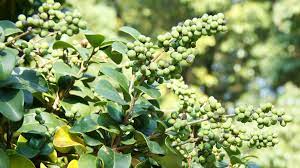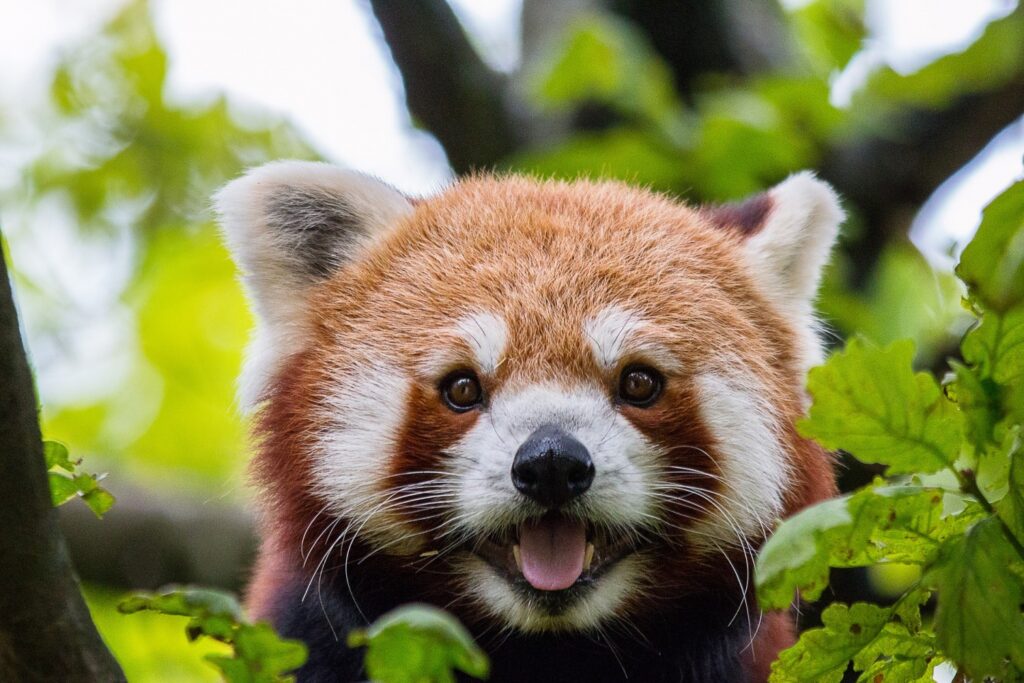Critically Endangered Species in India
–by Abhrajita Mondal
–Reading Time – 15 min Approx
The International Union for Conservation of Nature or IUCN has drawn a list of critically endangered species in India. You can consider them as the highest risk category. They are facing the risk of extinction today. IUCN’s scope of work includes science, action, and influence. IUCN has classified threatened species into various categories. You must have heard of the Red Book? The book lists species that are vulnerable to extinction. Let us continue reading to find out more.
Critically Endangered Species in India and more:
Now, all species are not critically endangered but they are facing the risk of extinction. The threatened species are segregated into vulnerable, endangered, and critically endangered species. It points towards the degree to which the species is threatened.
- Vulnerable species are likely to be endangered shortly. Therefore, it is a shout out to organizations to chalk out plans to protect these creatures from the wild
- Endangered species refer to species that are few or threatened by changing environmental conditions.
- Critically Endangered Species is considered the highest risk category. Such species will probably decline in numbers, in the next three generations. They are the most threatened.
India has a large number of critically endangered species. The reasons behind the declining numbers are illegal poaching, deforestation, disease, and loss of habitat. These animals are unable to find food in their natural habitat and might even be starving to death.
You have every right to know about the top ten critically endangered species in India. When you know about it, all of us together can join in the conservation efforts and do our part in helping the ecological system.
Top Ten Critically Endangered Species:
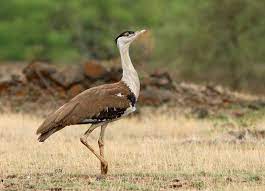
In India alone, there are more than seventy critically endangered animals and over sixty critically endangered plants. You will find mammals, birds, reptiles, amphibians, fishes, and corals as well, in the animal list.
-
The Great Indian Bustard:
The Great Indian Bustard is on top of the list of critically endangered species in India. You can identify the bird easily, it has a black-crowned forehead, with alternating shades of feather on the head and neck. Males have a larger crown and females have a band across the breast. They mostly feed on insects and greens. The various threats this species face in the wild is hunting, habitat loss, and infrastructure development.
-
The Gharial:
The Gharial is a critically endangered reptile. It is one of the three crocodile species found in India. The Gharial has probably got its name from the Indian word ‘Ghara’. It has a round knob-like structure at the end of its snout. They are efficient fish eaters. They are vulnerable to entanglement in fishing nets. Moreover, it frequently gets trapped underwater and drowns as result.
-
The Forest Owlet:
The Forest Owlet comes next. You will find it residing in deciduous teak forests. It is endemic to the Narmada River Valley in Central India. It sports a dark grey and brownish plumage with streaks. You can surely spot its bright yellow eyes. If you happen to spot an owl catching prey larger than itself, it may be the Forest Owlet. It is high on the critically endangered list owing to deforestation, and superstitious killing drives.
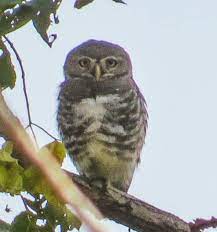
-
The Pygmy Hog:
The Pygmy Hog had faced the risk of extinction even before and massive conservation efforts have helped to spring it back. But still, it needs some serious conservation efforts. The smallest pig was re-discovered in 1971 in the Barnadi Wildlife Sanctuary. The 25cm tall animal has come back with a bang. However, they are about 200 in number today and are in urgent need of conservation.
-
Indian Vultures:
Indian Vultures are listed high on the list. Today, they are found in Madhya Pradesh and Rajasthan. Many vultures have seen death due to chemical poisoning. India has nine species of vultures. However, lately, there has been a steady decline in numbers. In the 1990s, they first appeared on the IUCN Red Data List. Deaths due to diclofenac poisoning have reduced due to conservation efforts. However, a lot still needs to be done.
-
The Ganges Shark:
The Ganges Shark is an important predator residing in the Brahmaputra, Ganga, and Mahanadi. It is amongst the most threatened shark species. The difference in this species is that they move dorsally instead of laterally. This indicates that it may swim along the riverbed looking for prey. It is on the decline due to overfishing, habitat loss, and dam construction. You should also know another fact – it is not dangerous to humans, unlike the Bull shark.
-

Image Courtesy: International Business Times The Annamalai Flying Frog:
The Annamalai Flying Frogs mainly inhabit the Western Ghats. They are found in the lower canopy of trees. You can see them gliding from one tree to another, thus named the Flying Frog. They have declined in numbers due to incessant killing by plantation owners. Moreover, locals see them as bad omen and kill them.
-
The Peacock Tarantula:
The Peacock Tarantula is a native of the deciduous forests of Andhra Pradesh. It was first spotted in Gooty, now you can find them on display with several pet collectors. The metallic blue Tarantula is a photosensitive species. They mostly feed on insects. However, if you provoke them, get ready to be bitten. Habitat change is yet another cause of their decline.
-
The Bengal Florican:
The Bengal Florican is a grassland bird that is more threatened than tigers today. Its main habitat is agricultural land. They are a victim of power transmission lines. There are less than 1,000 in number today.
-
The Himalayan Brown Bear:
The Himalayan Brown Bear is found in some of the most remote corners of the country. They are mostly natives of high-altitude regions; the Great Himalayan National Park in Himachal Pradesh is one of them. They are omnivores. They are on the IUCN critically endangered list due to illegal poaching for body parts, and habitat loss.
 Parameters to be Considered Critically Endangered:
Parameters to be Considered Critically Endangered:
IUCN considers certain criteria to tag a species as critically endangered in the Red List. The criteria include:
- They include a significant population reduction over three generations or ten years with a maximum of hundred years.
- Secondly, the cause of population reduction needs to be ascertained.
- Moreover, a reduction in number must occur in an area of 100 sq km.
- The population should have declined by about 25% over three generations or ten years.
- The population should have declined to 50 mature individuals.
- Finally, the probability of extinction must be 50 % over three generations or ten years.
List of Endangered Species in India 2020:
India celebrates National Endangered Species Day every year on the third Friday of May. The main aim of this celebration is to educate the masses about the endangered animals and plants in India. Stalwarts from several quarters review the existence of several species which are endangered, critically endangered, or vulnerable.
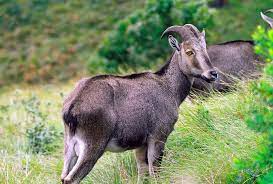
The top seven endangered species in India are:
- Asiatic Lion
- Bengal Tiger
- Snow Leopard
- Nilgiri Tahr
- Kashmiri Red Stag
- Black Buck
- One-horned Rhinoceros
Most of these animals are facing a high risk of extinction today. If conservation efforts are not enforced, we could be narrating their stories to our children after a few decades.
Critically Endangered List of Plants in India:
Many plants are also on the critically endangered list. People from all over the world recognize India for its biodiversity. It is on top of the mega-diverse countries in the world. Trees are a valuable part of our existence. However, owing to the selfishness of some human beings, many are nearing extinction. Natural forestlands have been converted for human usage which has led to soil erosion and landslides. Moreover, oxygen levels are also at an all-time low today.
Currently, Assam Catkin Yew tops the list. This plant species belong to the coniferous group. You will find it in the Northeastern part of India. Mostly, used in the construction of houses, this plant’s existence is under threat.
Malabar Mahogany is also threatened. You will find it in the southern part of India. It is used for medicinal purposes, like in the treatment of respiratory tract infections and genitourinary infections.
 The rare shrub, known by the common name Guggul, is also under threat. Found only in the central and western regions, it serves many medical purposes.
The rare shrub, known by the common name Guggul, is also under threat. Found only in the central and western regions, it serves many medical purposes.
The Indian Kino Tree is another plant species on the brink of extinction. Found in parts of Odisha, West Bengal, Uttar Pradesh, and southern India, it is known for its anti-inflammatory and anti-diabetic properties.
The government has not left any stone unturned to give protection to the flora and fauna, listed on the IUCN list. There is no dearth of Biosphere reserves in India today. Apart from reserves, there are botanical parks, national parks and sanctuaries aplenty. Human beings and the flora and fauna are interdependent on one another. Additionally, it brings about a balance in the ecosystem.
In India, biodiversity acts as an economic booster as well. Several industries like Tourism and medicine are dependent on the flora and fauna of India. Therefore, the Indian government has taken massive steps to conserve the flora and fauna population. You will also come across wildlife and environmental acts, passed by the government. Moreover, several projects are active throughout the year. So, it is for all of us to decide what we are ultimately looking forward to.
–by Abhrajita Mondal
